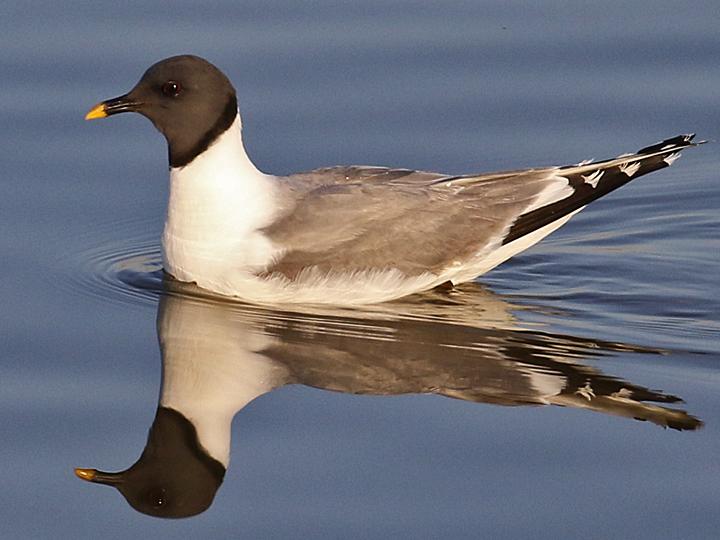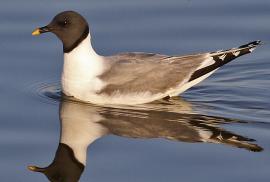Guide to Boreal Birds
Overview
This delicate gull is seldom seen outside the breeding season as it is almost exclusively oceanic. On the tundra coastline it gracefully plucks small crustaceans and insects from the surface of the water like a tern. It also takes eggs from nesting colonies of Arctic Terns. The best way to see this oceanic species is to take a boat trip out of Monterey, California, or some other Pacific Coast city.
Description
13-14" (33-36 cm). A small, fork-tailed gull, with black primaries and triangular white patch on rear edge of wing. Hood dark in breeding plumage. Bill black with yellow tip. Immature lacks dark hood but can be distinguished by forked tail and striking wing pattern.
Voice
High-pitched grating or squeaking notes.
Nesting
3 or 4 olive-brown eggs, spotted with darker brown, placed in a grass-lined depression on the ground. Nests in small colonies.
Habitat
Tundra ponds in summer; open ocean on migration and in winter.
Range/Migration
Breeds on coastal tundra around shores of Arctic Ocean, farther inland in Alaska. Migrates mainly at sea. Winter range not fully known; some birds winter off Pacific coast of northern South America.



